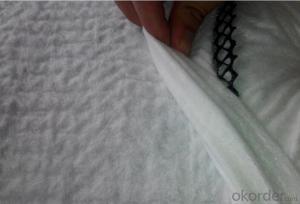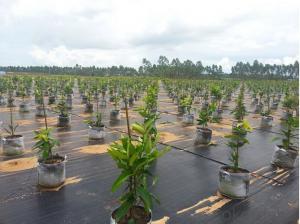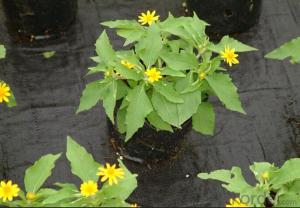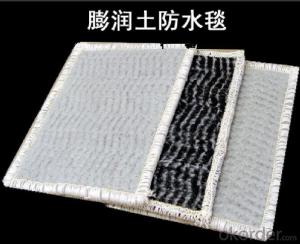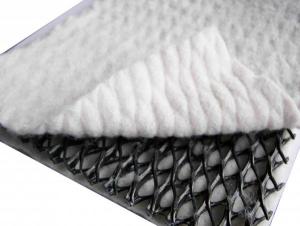HDPE Geocomposite Drainage Geonet Liner Made In China
- Loading Port:
- Qingdao
- Payment Terms:
- TT OR LC
- Min Order Qty:
- 2000 m²
- Supply Capability:
- 200000 m²/month
OKorder Service Pledge
OKorder Financial Service
You Might Also Like
HDPE Geocomposite Drainage Geonet Liner Introduction
Drainage Geocomposites GCD is a high drainage capacity geocomposite, consisting of a flexible and high compressive strength HDPE Geogrid, covered by non woven-needle punched PP polypropylene geotextiles on one or both sides. Also available in PES polyester, HDPE high density polyethylene, coloured - recycled or waterproof one side.
Specification
Geonet thickness: 5-8mm; Width: 2-4m; Length as requested
Geotextile can be needle punched polyester geotextile, continuous filament PET nonwoven geotextile or Polypropylene nonwoven geotextile, and the unit weight normally 200g/m2.
NO | ITEM | UNITS | Value | ||||
1 | Unit weight | G/M2 | 750 | 1000 | 1300 | 1600 | |
2 | Thickness OV=20Kpa | Mm | 5.0 | 6.0 | 7.0 | 7.6 | |
3 | Hydraulic conductivity | m/s | KX10-4 | KX10-4 | KX10-3 | KX10-3 | |
4 | Elongation | % | <50< span=""> | <50< span=""> | <50< span=""> | <50< span=""> | |
5 | Tensile strength (core net work) | KN/m | 8 | 10 | 12 | 14 | |
6 | Geotextile | G/m2 | 200-200 | 200-200 | 200-200 | 200-200 | |
Features
1. Excellent drainage function, able to bear long time high pressure load
2. High tensile and shear strength
3. Able to protect its long time and stable hydraulic conductivity
4. Able to bear more than 2000kpa compression load, its anti-pressure capacity much higher than common drainage network
5. Corrosion resistant, acid and alkali resistant.
Application
Landfill drainage; Roadbed and road drainage; railway drainage; tunnel drainage; underground structure drainage; the retaining back wall drainage; garden and sports ground drainage.
Geonet is made of HDPE and anti-ultraviolet additives
1. Anti-aging, corrosion resistance
2. Highway and railway subgrade: effectively distribute load, improve its bearing capacity and stability and prolong service life
3. As layer of highway slope so that geonet can prevent landslide and protect water and soil, and beautify the environment
4. In reservoir and rive dykes to effectively prevent landslide; in the coastal engineering because of its soft good toughness, corrosion strong characteristic to buffer wave swept and corrosion
FAQ
1.How about the delivery time?
Lead time since receipt of 30% T/T deposit payment: 2-3 weeks. (Samples will be prepared within 3 days.)
2. What kind of payments does jenor support?
T/T, L/C, Cash are accepted.
3. What's are the MOQ?
We can according to your condition to set the MOQ. and we can provide you samples for quality inspection before the mass production.
4. Do you charge for the samples?
Accordeing to our company policy, the samples are free, we only charge the freight fee.
5. Can you produce according to customers' design?
Sure, we are professional manufacturer, OEM and ODM are both welcome.
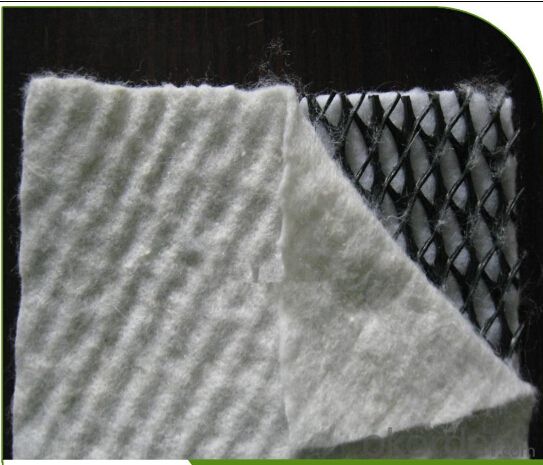
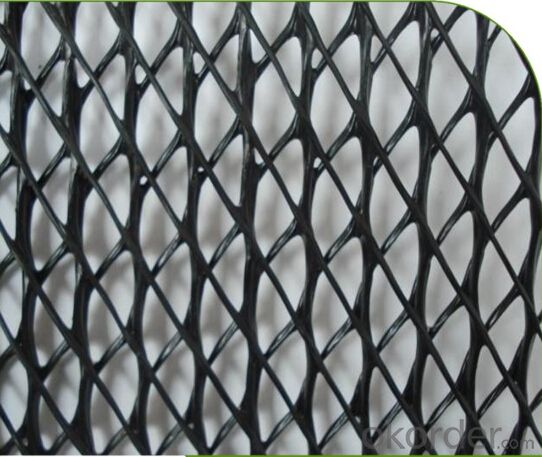
- Q:How are geonets used in earthwork?
- Geonets are used in earthwork to provide soil stabilization and drainage. They are placed within the soil layers to enhance its strength and prevent erosion by distributing the load evenly. Additionally, geonets facilitate the efficient flow of water, preventing the accumulation of excess moisture in the soil, which can lead to instability.
- Q:How do earthwork products help with sediment retention?
- Earthwork products, such as sediment control devices like silt fences, sediment basins, or sediment traps, play a crucial role in sediment retention. These products are designed to intercept and trap sediment-laden runoff from construction sites, preventing it from entering nearby water bodies. They act as physical barriers, allowing water to flow through but capturing sediment particles. By effectively retaining sediment on-site, earthwork products help minimize erosion, improve water quality, and protect ecosystems downstream.
- Q:What are the advantages of using geocells in earthwork?
- Using geocells in earthwork offers several advantages. Firstly, geocells provide increased load-bearing capacity, allowing for more efficient and cost-effective construction. They distribute the load over a wider area, reducing the stress on the subgrade and preventing soil erosion. Secondly, geocells improve soil stabilization and prevent lateral movement. By confining the soil within the cells, they enhance the overall stability of the structure and prevent soil displacement, especially on sloping terrains. Thirdly, geocells are easy to install and require minimal maintenance. They are lightweight and can be quickly deployed, making them a convenient solution for temporary or permanent infrastructure projects. Lastly, geocells are environmentally friendly. They promote sustainable construction practices by reducing the need for excavation and transportation of materials. They can also be filled with recycled materials, further reducing the environmental impact of the project. Overall, the advantages of using geocells in earthwork include increased load-bearing capacity, soil stabilization, ease of installation, low maintenance, and environmental sustainability.
- Q:How do geopipes help in stormwater infiltration systems?
- Geopipes help in stormwater infiltration systems by effectively capturing and transporting stormwater runoff to designated infiltration areas. Their perforated design allows for efficient water drainage and prevents clogging, ensuring the smooth infiltration of stormwater into the ground. Geopipes also help distribute the water evenly across the infiltration area, minimizing the risk of localized flooding or erosion. Overall, geopipes play a crucial role in enhancing the functionality and effectiveness of stormwater infiltration systems.
- Q:What are the advantages of using geotextile mattresses?
- Geotextile mattresses offer several advantages, including erosion control, slope stabilization, and protection against scouring. They are easy to install and provide immediate protection to underlying surfaces. Additionally, these mattresses are permeable, allowing for the passage of water while retaining soil particles, which helps in sediment control and the prevention of clogging. Moreover, geotextile mattresses are durable and resistant to UV degradation, making them a cost-effective solution for various civil engineering and environmental projects.
- Q:What are the different types of geosynthetic reinforcements for tunnel construction?
- There are several types of geosynthetic reinforcements used in tunnel construction, including geotextiles, geogrids, and geocomposites. Geotextiles are permeable fabrics made from synthetic fibers that are used to separate, filter, and reinforce soil materials. Geogrids are high-strength synthetic materials in the form of grids or mesh structures, which provide tensile strength and soil confinement. Geocomposites combine the properties of geotextiles and geogrids, offering a combination of filtration, separation, reinforcement, and drainage capabilities. These different types of geosynthetic reinforcements play a vital role in improving the stability, structural integrity, and longevity of tunnels.
- Q:Brief description of the application range of Portland cement, ordinary cement, slag cement, volcanic ash cement and fly ash cement
- Slag Portland cement (referred to as slag cement), volcanic ash Portland cement (referred to as volcanic ash cement) and fly ash Portland cement (referred to as fly ash cement) are made of cement clinker. Mixed with the amount of gypsum made of fine. Wherein the variety and the content of the mixed material are different. The mixed material of the slag cement is granulated blast furnace slag, and the blending amount is 20% ~ 70% by weight; the mixed material of the volcanic ash cement is a mixed material of volcanic ash, the dosage is 20% ~ 50% by weight; Fly ash cement in the mixed material is fly ash, blending by weight percentage of 20% to 40%.
- Q:How do earthwork products help with bank stabilization?
- Earthwork products, such as geotextiles and geogrids, play a crucial role in bank stabilization by providing reinforcement and erosion control. These materials are designed to prevent soil erosion and retain the stability of slopes and embankments. Geotextiles act as a filter, allowing water to pass through while retaining soil particles, thereby reducing erosion. Geogrids, on the other hand, reinforce the soil by distributing the loads and increasing its strength, effectively stabilizing the banks against potential failure. By using earthwork products, banks are protected from erosion, ensuring their long-term stability and preventing potential damages.
- Q:What are the advantages of using geosynthetic materials in road embankment construction?
- Using geosynthetic materials in road embankment construction offers several advantages. Firstly, geosynthetics provide enhanced stability and strength to the embankment, reducing the risk of slope failures and soil erosion. These materials also improve drainage and prevent the accumulation of excess water, thereby increasing the lifespan of the road. Additionally, geosynthetics are lightweight and easy to install, saving time and labor costs during construction. They also offer environmental benefits by reducing the need for traditional construction materials, such as soil and stone, which can deplete natural resources. Overall, geosynthetic materials are a cost-effective and sustainable solution for road embankment construction.
- Q:Can earthwork products be used for water containment systems?
- Yes, earthwork products such as geosynthetic liners, geomembranes, and geotextiles can be used for water containment systems. These materials are designed to provide impermeability, stability, and erosion control, making them suitable for lining and reinforcing various water containment structures like ponds, reservoirs, canals, and landfills.
1. Manufacturer Overview |
|
|---|---|
| Location | |
| Year Established | |
| Annual Output Value | |
| Main Markets | |
| Company Certifications | |
2. Manufacturer Certificates |
|
|---|---|
| a) Certification Name | |
| Range | |
| Reference | |
| Validity Period | |
3. Manufacturer Capability |
|
|---|---|
| a)Trade Capacity | |
| Nearest Port | |
| Export Percentage | |
| No.of Employees in Trade Department | |
| Language Spoken: | |
| b)Factory Information | |
| Factory Size: | |
| No. of Production Lines | |
| Contract Manufacturing | |
| Product Price Range | |
Send your message to us
HDPE Geocomposite Drainage Geonet Liner Made In China
- Loading Port:
- Qingdao
- Payment Terms:
- TT OR LC
- Min Order Qty:
- 2000 m²
- Supply Capability:
- 200000 m²/month
OKorder Service Pledge
OKorder Financial Service
Similar products
New products
Hot products
Related keywords


